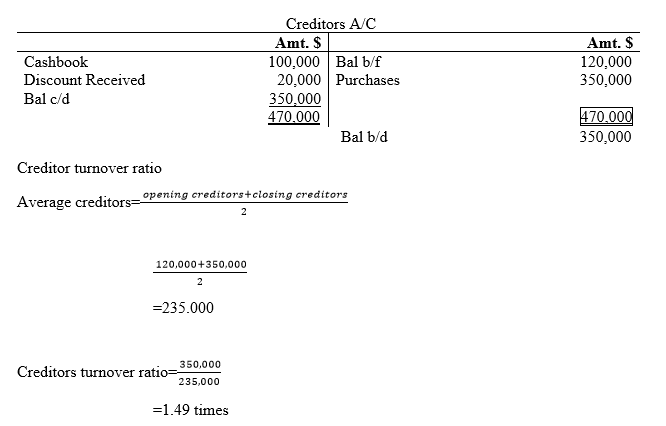What is Creditors’ Turnover Ratio?
This quotient estimates the speed (creditor velocity) at which cash is paid to creditors and credit purchases is undertaken. Therefore, this ratio gauges the efficiency with which credit purchases for the goods takes place in a business.
The formula is expressed as follows;

NB: Cash purchases are not incorporated in this computation
Interpretation
For every unit change in creditor value, the credit purchases change directly by a certain units which can either be between zero and one or more.
NB: The higher the ratio the better are the creditor activities and the vice versa is true
Example
Dominion ltd provided you with the following creditors’ information for the year ended 2020
`Creditors (opening balance) 120,000
Cash purchases 60,000
Credit purchases 350,000
Cash payment to creditors 100,000
Discount Received 20,000
No. of days in a year is assumed to be 360
Required
- Determine the creditors’ turnover ratio
- Determine Debt Payment Period
Solution
Preparation of creditors’ ledger account

Interpretation
Number of times debts are paid in a given period are 1.49 times
Debt Payment Period
With debtor’s turnover ratio which measures debtor velocity, it is possible to determine the extent to which debts have been collected in time. This can be established by dividing the days in a year by the debtors’ turnover ratio results as follows;

Conclusion; in this case, the payment to creditors speed is too slow which is an advantage to the firm as a source of financing for a longer period.
Applicability of creditors’ turnover Ratio in Decision Making by Management
Denominator factor; The management as per creditor turnover ratio need to set debt payment policies to govern Creditors’ worthiness after close examination of the observed items.
Numerator factor; The numerator is composed of net credit purchases which allows for limited adjustments by the management.